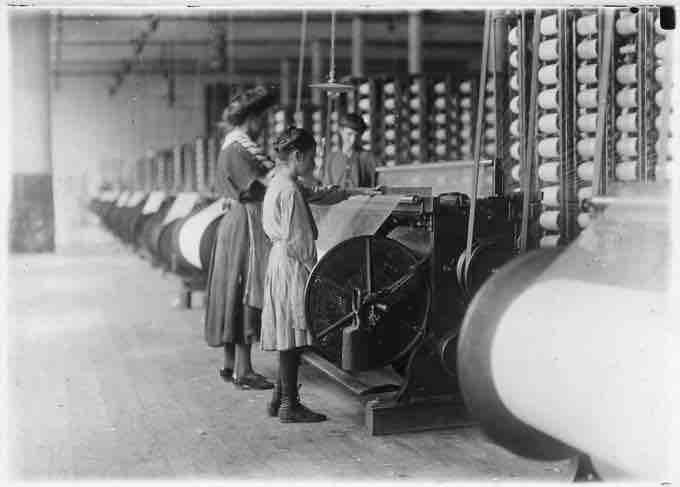The process of production generates output, otherwise referred to as good and services. Production processes require three inputs: land, capital and labor. Land is simply the place where you produce your product, whether it is a factory or a farm, and may included capital if the output being created is a service. In most scenarios, the inputs in the production process are primarily capital and labor.
Capital
Capital, otherwise known as capital assets, are manufactured goods that are used in production of goods or services. Control of these assets are the primary means of creating wealth. Included in capital is anything that has been manufactured that can be used to enhance a person's ability to perform economically useful work. For a caveman, a stick or a stone would have been considered capital. For a post-industrial worker, a laptop, computer, and cellphone would be considered capital .

Girls running warping machines in Loray Mill, Gastonia, N.C. by Lewis Hine, 1908.
Any tool or machine that could be used to improve someone's ability to work would be included in capital.
In regards to production, it also is important to know what capital is not. While capital may refer to funds invested in a business in other disciplines such as accounting, cash is not included in capital in terms of a production input in economics. Homes and personal automobiles are also not included in capital because these items are not directly tied to the production of goods or services.
Labor
Labor is a measure of the work done by human beings to create a manufactured output. Producers demand labor because it aids in producing output which can then be sold. In production, a worker will only be hired when the marginal revenue s/he brings in exceeds or equals the marginal cost of hiring that worker. The cost of one worker is the wage.
The value of labor varies based on the skills and talents that the individual worker brings to that job. If the job involves designing and building a computer, an engineer's labor is more valuable than a tailor. If the job requires the manufacture of a suit, an employer would prefer the tailor. Other elements that influence the perception of the value of a specific type of labor in production include the amount of training necessary to execute the task and the barriers to conducting that type of work.